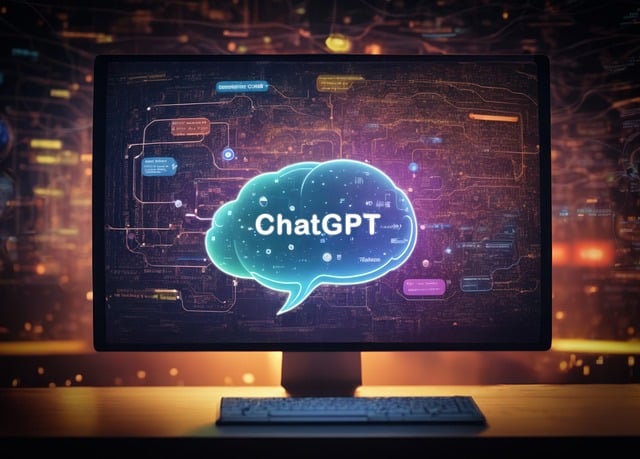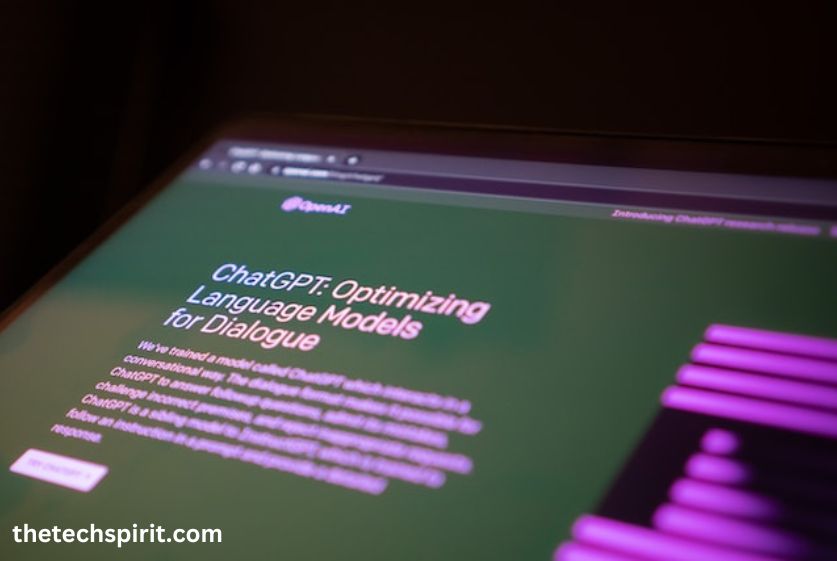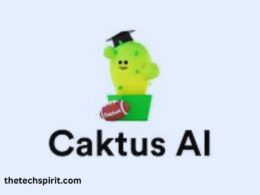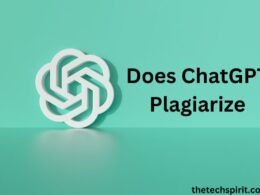OpenGPT is a new and exciting open-source AI system that offers advanced natural language processing capabilities through machine learning. As an open-source project, OpenGPT provides opportunities for customization, collaboration, and innovation not possible with closed, proprietary systems.
In this article, I will take a deep dive into understanding what OpenGPT is, how it compares to other AI tools, its current abilities and future potential, and how you can try out OpenGPT yourself.
Table of Contents
What is OpenGPT and How Does it Work?
OpenGPT was created in 2022 by Anthropic, an AI safety startup, as an open-source version of GPT-3. GPT-3 is one of the most advanced natural language AI systems created by OpenAI for generating human-like text responses based on the given context.
While GPT-3 itself is not available publicly, OpenGPT replicates much of its functionality using an open-source machine learning technique known as Constitutional AI. This technique constrains model behavior during training to produce an AI assistant focused on being helpful, harmless, and honest.
OpenGPT takes in text prompts and attempts to provide coherent, relevant text responses to queries, questions, and tasks related to the prompt. It can analyze the context and intention behind prompts to produce surprisingly human-like outputs.
OpenGPT’s Architecture and Capabilities
The initial version of OpenGPT uses the InstructGPT architecture, which has over 175 billion parameters compared to GPT-3’s impressive 175 billion parameters. While not as powerful as GPT-3, it is trained on the same methodology and dataset meaning OpenGPT has strong language and text generation abilities.

Specifically, OpenGPT excels at text completion – it can auto-generate emails, essays, code, articles, poetry, and more when given a prompt with some initial context and examples. It also does well at answering questions based on passages of text, summarizing long content, and translating text between languages.
These abilities stem from OpenGPT’s training using self-supervised learning on a massive dataset of online material like books, websites, and more. By analyzing statistical patterns in the structure and meaning of this text data, OpenGPT builds a complex inner representation it can leverage for tasks.
How OpenGPT Uses Machine Learning
Like many AI systems including GPT-3, the core machine learning technique behind OpenGPT is the transformer architecture. Transformers were first introduced in 2017 and represented a major evolution in natural language processing.
The key innovation with transformers is the use of a self-attention mechanism to model the contextual relationship between all words in a piece of text. This allows a much greater understanding of the nuanced meaning behind sequences of text.
On top of the base transformer architecture, OpenGPT uses a training methodology called reinforcement learning from human feedback (RLHF). This allows OpenGPT to efficiently learn human preferences and goals solely by providing feedback on its outputs during training.
Combined, RLHF and transformers give OpenGPT its impressive natural language abilities while keeping the system safe and robust. The model is hosted on Anthropic’s Constitutional AI self-supervised learning platform as well.
Comparing OpenGPT to Other AI Systems
To better understand OpenGPT’s current capabilities, it is useful to contrast how it compares functionally to other popular natural language AI systems. The two most relevant comparisons are against GPT-3 itself and existing open-source text generation projects.
OpenGPT vs. GPT-3
As the open-source version of GPT-3, the benchmarks between the two systems are important. Currently, OpenGPT is less capable than GPT-3 across all areas including text completion, question answering, classification tasks, and more.
OpenGPT may catch up significantly in the future as it undergoes additional training. It also offers customizability not available with GPT-3 – users can fine-tune models for specific domains and tasks.
Most notably, evaluating OpenGPT based on ethics and aligning with human preferences shows much greater performance compared to GPT-3. This results from OpenGPT’s Constitutional AI training methodology focused on safety.
OpenGPT vs. Other Open Source AI Projects
Compared to other open-source natural language projects like GPT-NeoX and Bloom, OpenGPT again falls behind in raw capabilities but shows promise in quickly improving. Projects like GPT-NeoX have received far more training over months which explains some of the performance gap.
A key differentiator for OpenGPT even among open source projects is the focus on AI safety through Constitutional AI. Most other open-source models mimic the standard pre-training approaches used by large companies without safety considerations built in.
This gives OpenGPT a major advantage as its capabilities start matching other models since downstream performance issues resulting from a lack of safety methodologies are less likely to appear.
The Promise and Potential of OpenGPT
While still early in development, OpenGPT shows immense promise as an open-source natural language AI model aligned with human values and priorities. Several key strengths make its future potential extremely compelling.

Applications and Use Cases
Even in its initial state, OpenGPT can serve useful applications across many domains including:
- Automating digital assistants and chatbots
- Generating written content like articles, emails, reports
- Answering customer support and product questions
- Developing creative fiction stories and poetry
- Translating documents and passages between languages
- Extracting insights from data
As the model capabilities grow, practically any application involving understanding, generating, or summarizing text will benefit greatly from integrating OpenGPT.
Community Contributions and Customization
A major advantage over closed models is that OpenGPT allows public contributions and modifications. Researchers are already working to reproduce OpenGPT results and create customized versions focused on specific types of text data.
Allowing open research enables much faster innovation as academics and companies build on each other’s work and findings. Over time this can massively amplify the pace of progress compared to closed development.
The Future Roadmap for OpenGPT
While the base Constitutional AI methodology will remain, OpenGPT itself will rapidly evolve new capabilities in the months ahead. The top priorities on the roadmap are:
- Expanding the model architecture with additional parameters
- Pre-training on larger unlabeled datasets
- Supporting model customization through fine tuning
- Hosting through Anthropic’s self-serve platform
- Improving reasoning and retrieval skills beyond text generation
Meeting these milestones will bring OpenGPT much closer to parity with GPT-3 while maintaining safety and oversight throughout training.
Trying Out OpenGPT for Yourself
As an early-stage open-source project, getting hands-on with experimenting with OpenGPT does require some technical skills. However, the process is straightforward for enterprising developers or AI enthusiasts comfortable with basic coding.
Getting Access to Test OpenGPT
To try out OpenGPT, first head to the official OpenGPT Github repository which has instructions for gaining Research Access. This grants API quota to test calls.

You will need an Anthropic account to join the public testing Discord. Expect the access and testing process to streamline over time as interest grows.
Experimenting with Queries and Inputs
Once set up with credentials, the OpenGPT API allows sending prompt text and getting model outputs programmatically. Start with simple writing prompts or question-answering before trying more advanced use cases.
Analyze the outputs across factors like coherence, accuracy, and creativity looking for any false or nonsensical text. Be sure to provide feedback to the Anthropic team on findings.
Integrating OpenGPT into Apps and Products
For developers, once familiar with OpenGPT capabilities, consider integrating it into prototypes and products leveraging natural language processing. Focus on value-added areas vs. existing solutions to showcase where AI can truly enhance experiences.
Be transparent with users about OpenGPT utilization and be prepared to monitor for any potential issues arising from model limitations. This will lead to the most productive learning and development.
Conclusion
OpenGPT represents an exciting evolution in openly developed AI focused on building safe and beneficial language models. While work remains to achieve performance on par with leaders like GPT-3, OpenGPT’s rapid early progress shows the immense potential ahead.
We encourage all innovators to test out OpenGPT today and provide feedback to contribute toward the future of AI created for the common global good.
FAQs
Is OpenGPT free to use?
Yes, OpenGPT is completely free and open source allowing full access to the model and training code. Anthropic does limit free API quotas but higher tiers are available.
What companies are using OpenGPT so far?
As a very new project, no major companies are using OpenGPT in production yet. However many research teams and startups are evaluating it in pilot use cases.
Can I customize OpenGPT for my specific domain?
Not yet, but fine-tuning support is on the product roadmap ahead to allow customization on proprietary data. This will greatly expand application domains.
Is OpenGPT’s output creative and variable like GPT-3?
To an extent, though creativity and originality lag behind GPT-3 currently. But output quality and uniqueness are actively improving with ongoing training.
Who maintains and improves OpenGPT?
Anthropic built and open-sourced the initial model but welcomes public contributions from any researchers and developers abiding by the Constitutional AI principles.









